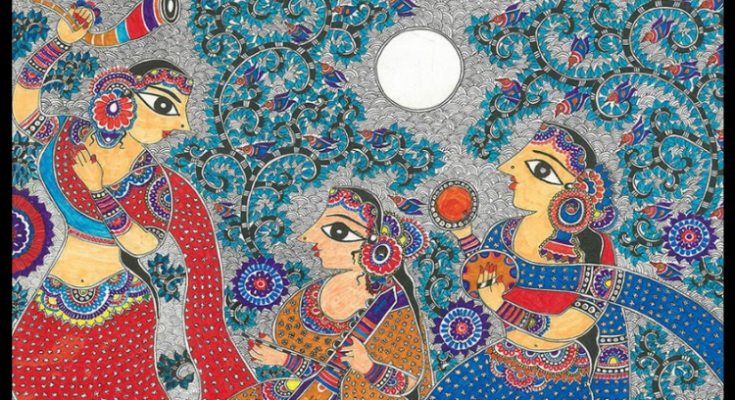The various designs in Madhubani paintings
Madhubani art, as the name suggests, traces its roots to Madhubani or Mithila in Bihar in India and also adjoining regions in Nepal. This art form is therefore is also known as Mithila art. The beautiful art form represents traditional India. The unique and important element of this art form is the border, usually depending on the size of the canvas, which makes the painting look complete. The art form is believed to have originated during the Ramayana era.
Traditionally, while these paintings were done by the women on freshly plastered mud walls and floors of huts, they are also done on cloth, handmade paper, and canvas at present. These incorporate two-dimensional imagery and the colors used are derived from plants. The unique characteristic of these paintings is that it's for each festival and occasion like a birth, marriage, Holi, Surya Shastri, kali puja, Durga Puja, Diwali, and the sacred thread ceremony.
Originally the paintings depicted an assembly of symbolic images of the sun, moon, lotus plant, the bamboo grove, fishes, birds, and snakes in the union. These images represent prosperity, the proliferation of life. Mostly used colours in these paintings are deep colors like red, green, blue, and black. Besides, deep colors other colors like yellow, pink, and lemon are also used.
There are various styles of Madhubani painting: Kachni which is only line work, usually monochrome; Bharni, wherein the subjects are filled with solid colors, and Godhana where the figures appear in concentric circles on parallel lines. Besides, there Bhittichitra and Aripana which are used for the creation of paintings on walls and floors respectively.
Mithila painting is thus a representation of domestic ritual activities, the culture of India as well as the beauty of nature and life.

